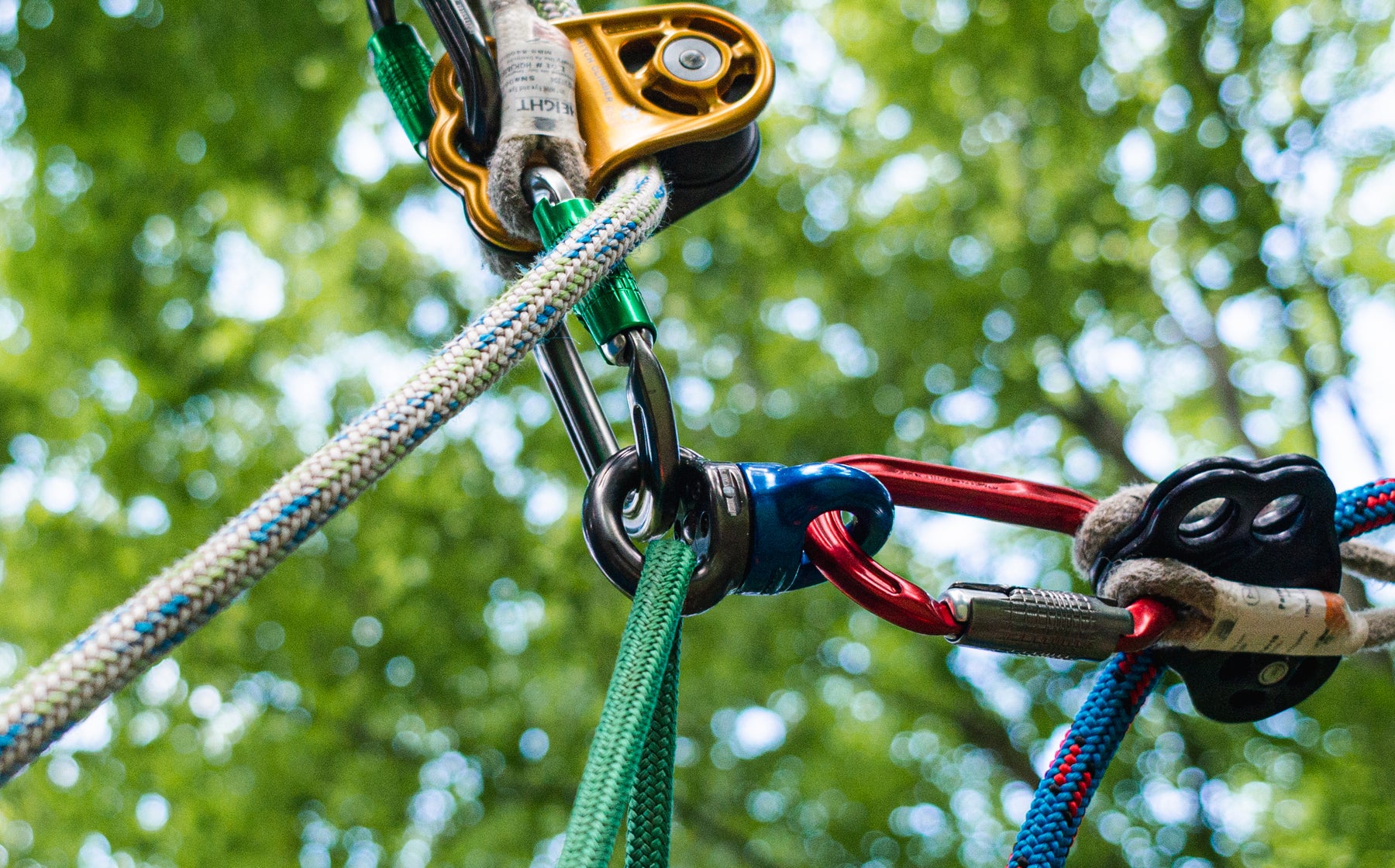
Pivot Effortlessly with a Swivel

Swivels have climbers on both sides of the fence: some sway pro-swivel, while others say swivels are a waste. What really is the intended benefit of a swivel anyway? Which swivel should I be using? Open Swivels? Micro Swivels?
In the past, traditional harnesses had a floating D-ring or two forward D’s that came together for a central attachment point. No other equipment was required to attach your climbing system to.
Today, modern harnesses have a rope bridge instead, and offer flexibility in connecting with rings, lanyards, or swivels. Which one is best? As we all know, this is completely dependent on what the climber is comfortable with.
Switching It Up with Swivels
Swivels are used in a variety of applications. When a swivel is adapted to the bridge of a harness, it can help prevent rope crossover. It will not remedy crossover as you move around the canopy. The other major benefit is that the swivel keeps your climbing system correctly oriented at all times, which is a great deal of help when positioning.
Which Swivel Should You Use?
With so many options, which swivel reigns supreme?
Most swivels are meant to be loaded on their major axis. If this is the case for you, you may want to stick with something along the lines of a Petzl Swivel. Petzl swivels give the user the ability to connect two systems along the top side of the swivel, opposite that of the bridge, as long as it stays along the major axis. They’re simple yet effective, come in two different sizes and can be used in a variety of applications besides the traditional: on the bridge of the harness application.
DMM Axis Swivels on the other hand can be a bit more versatile, when it comes to loading purposes. These happen to be my favorite swivels (when I was using one) due to the fact that I was able to squeeze more life out of these when compared to others. These DMM Axis swivels have a total of six wear/connecting points, which is what helps “extend” the longevity of the device depending, but it can depend on how the device is stored and used. Now, does this mean one should connect five additional attachments all at once while in suspension? No, it does not. This simply means that this specific DMM swivel can be used differently than others. Let’s say that on a particular day, one does not wish to swivel and would like to a have a fixed connection, the user could opt to load the non-swiveling side and leave the swivel side free to connect a lanyard if needed for different positioning techniques. Make sure to periodically rotate the swivel so that the device wears evenly.
Open style swivels can be mounted to virtually anything! This can be a good thing and a bad thing, depending on how you take to equipment that requires tools to open. There exist a couple of options if this is indeed the route you would like to take. Petzl offers two Open Swivels with differences between both. Petzl's Open Swivel can open from both swivels while the Petzl Micro Swivel only opens from one side and the other being a micro connection with a grommet inserted into the attachment point. This would keep the system a bit more condensed and reduce the length of whatever it is that has been attached. For example, connecting it to an Akimbo or at the end of a lanyard. If neither of these do it for you, another option would be CAMP’s Enigma Swivel. Both shackles of this swivel are removable and can pivot to the extreme. Personally, I’ve mounted an Enigma to my Pulleysaver and it has been a dream! Of course, working with tools that can open might stray some away but as with any tool, inspection and proper storage is critical.

Leave a comment